Transplanting Tomatoes: When and How
When is the right time to start transplanting tomatoes outside? The most obvious answer is when the weather has warmed up. But be careful! Frost can strike unexpectedly, and you’ll need to stay on top of the forecast to keep your plants safe.
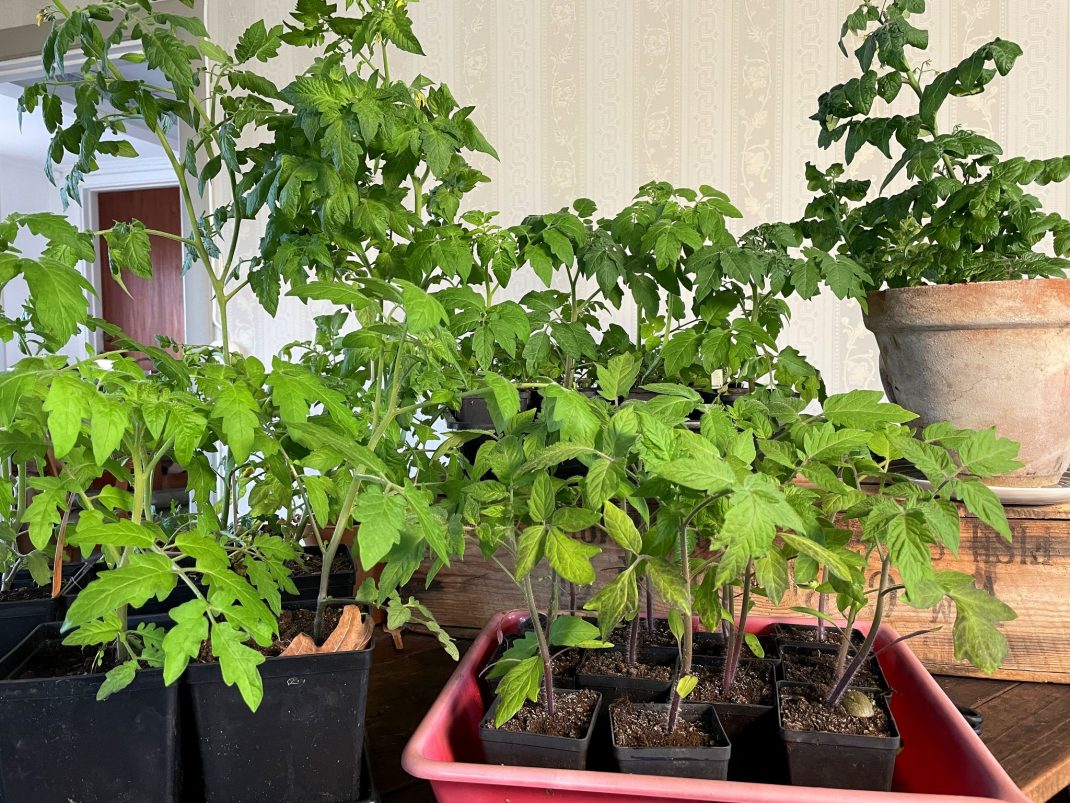
This is part of my collection of around 80 plants. Time to start transplanting tomatoes!
Spring warmth comes and goes, rain turns to snow, and the plants are growing big indoors. I scratch my head, thinking about the tomatoes. When can I transplant them outside? They are the perfect size right now, and it would be wonderful to clear some space indoors. If they aren’t transplanted soon, I’ll have to repot them. I can’t give an exact answer to when it’s time to start transplanting tomatoes outside, but I’ll share my thoughts and hope they’ll be helpful!
Tomatoes and cold
Like many of the vegetables we start indoors, tomatoes are sensitive to cold. If it stays chilly for too long (without necessarily freezing) the plants will struggle. They may have difficulty absorbing nutrients from the soil, the leaves can get damaged, and the plants become generally weak. Some tomato plants might survive a brief period of frost under the right conditions, but I would never recommend anyone to try their luck. The cold is unpredictable. Just because some plants have survived one cold night doesn’t mean they’ll make it through the next. And few things are more disheartening than losing your tomato plants to unexpected frost!
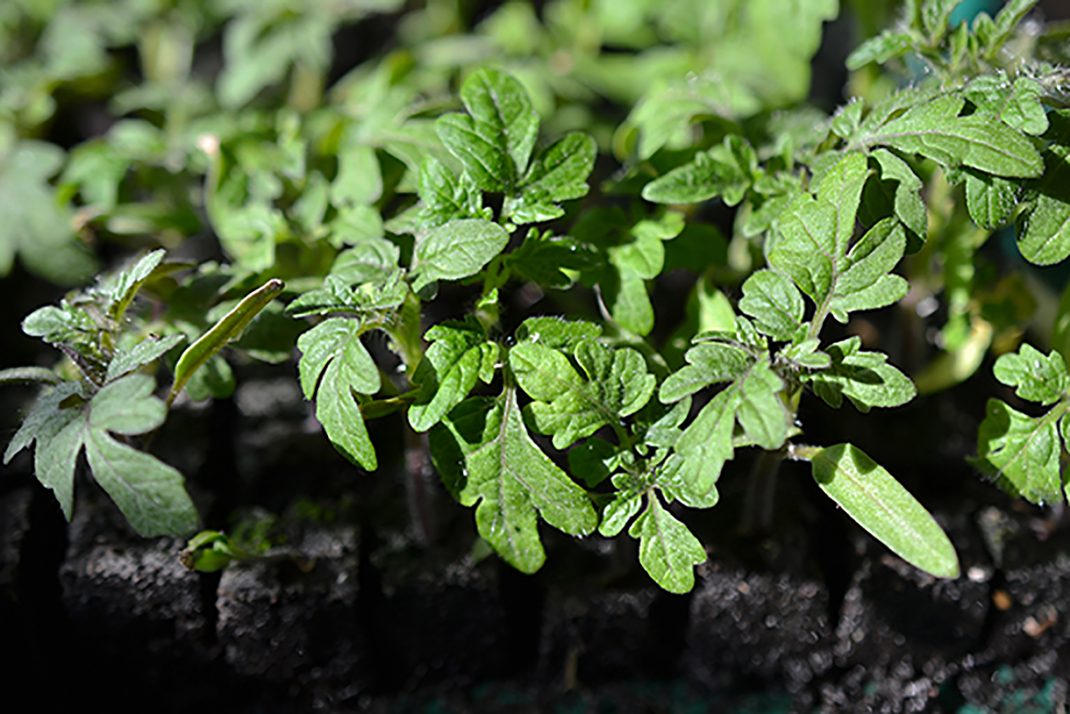
Young tomato plants thrive best indoors or in a warm greenhouse until the weather is just right for transplanting tomatoes outside. They don’t like the cold!
So, if you’re thinking about transplanting your tomatoes outside, make sure that frost is no longer a risk or that you have a way to protect your plants. The weather seems to be getting more and more unpredictable with time. Just a few years ago, we had 17 degrees Fahrenheit (-8 degrees Celsius) in late May here in Sweden where I live. Even with row covers, few things protect cold-sensitive plants in such low temperatures.
If you plan to move your plants outside gradually (hardening them off), make sure you have a backup plan to bring them inside if the nights turn too cold. Keep an eye on the weather forecast!
Read more: Fertilizing tomatoes - can you overdo it?
Transplanting tomatoes to the greenhouse
The first tomatoes to be transplanted are the ones meant for the greenhouse. Check the forecast before you start planning. Keep plants indoors until nighttime temperatures consistently stay above at least 41 degrees (5 degrees Celsius). If you live in a cold-prone area, wait a bit longer. Greenhouses can sometimes create colder conditions than the outdoors due to condensation, so make sure temperatures stay well above freezing.
A great tip for transplanting tomatoes to the greenhouse is to plant your tomatoes as deep as possible in the soil. The soil helps insulate the stem, making it easier to protect the plant in case of cold weather. Tomatoes will develop new roots along the buried stem.
Read more: How to grow tomatoes in pots
Transplanting tomatoes to pots
Growing tomatoes in large pots or containers is practical — especially if you use pots that can be easily moved. Depending on the weather, you can keep them outdoors, in a greenhouse, or move them around to get the right temperature.
When planting in containers, bury the plant as deep as the pot allows.
A useful tip is to put your potted tomatoes together in the center of a greenhouse at first. This method will give the plants some extra protection against the cold. After that, you cover them with row cover at night. If there’s a risk of severe frost, even two layers of thick row cover or a blanket can help. Keep the pots clustered together until nighttime temperatures are reliably warm before moving them to their final locations.
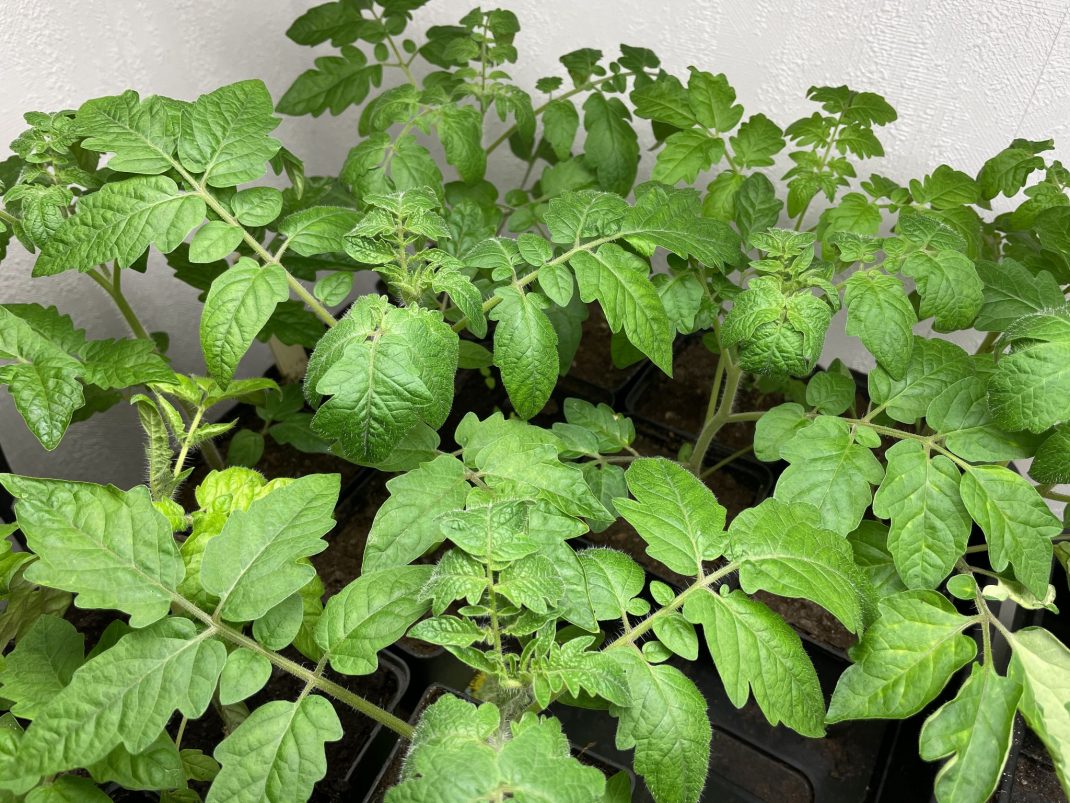
Several of my tomato plants are so-called Piennolo tomatoes—varieties that can be stored fresh for a long time. These are rarely available at nurseries, so I take extra good care of them. Transplanting tomatoes like these into the cold is out of the question!
Raised beds
Tomatoes grow well in raised beds, and you can fit about six tall varieties in a standard raised bed. But be patient! If frost threatens your regular beds outside, raised beds covered with lids or row cover might help. Just remember that you’ll need some luck to avoid frost damage completely. The tomato leaves are delicate, after all. A single instance of frost can make the leaves go limp and slightly translucent, and the stems are just as fragile on young plants.
Find out your local last frost date. If the ten-day forecast shows no frost leading up to that date, you can transplant your tomatoes outside about ten days before. If you want to take a gamble, you can transplant earlier, but the risk of losing everything to frost is real.
Garden beds
The same advice for raised beds also applies to your regular garden beds — find out the last frost date! There's no pride in being the very first to start transplanting tomatoes outside. If you want to show off an early harvest, why not pamper a few plants in the greenhouse to get started? Just try to play it safe with your outdoor tomatoes. There are no second chances.
When planting tomatoes directly in the ground, try to bury them deep to make it easier to protect them from cold. Row covers might not be enough if there’s a hard frost. It’s wise to have small wire hoops ready so you can create a tunnel over the plants. If frost is expected, you can lay a blanket over the tunnel for extra insulation.
Read more: How to grow early tomatoes

The goal! A regular garden can produce an abundance of tomatoes. Transplanting tomatoes a little later doesn’t affect the harvest much. It’s the timing of the sowing that matters most.
The climate
I live in the south of Sweden in northern Europe. The right timing to transplant depends a lot on the particular circumstances where you live. If you live far north, you should probably try to wait as long as possible and also make plans to protect the plants against unexpected frost. Greenhouses are a fantastic option! Keep in mind that glass greenhouses don’t provide as much insulation as plastic or polycarbonate ones.
If you live in a colder region (not just in the north—there are cold pockets and highland areas elsewhere), consider repotting your tomatoes into medium-sized containers first. These can be placed in crates that you can move back and forth depending on the weather. Once the frost risk has completely passed, transplant them to their final locations.
More: Tomatoes from sowing to harvest
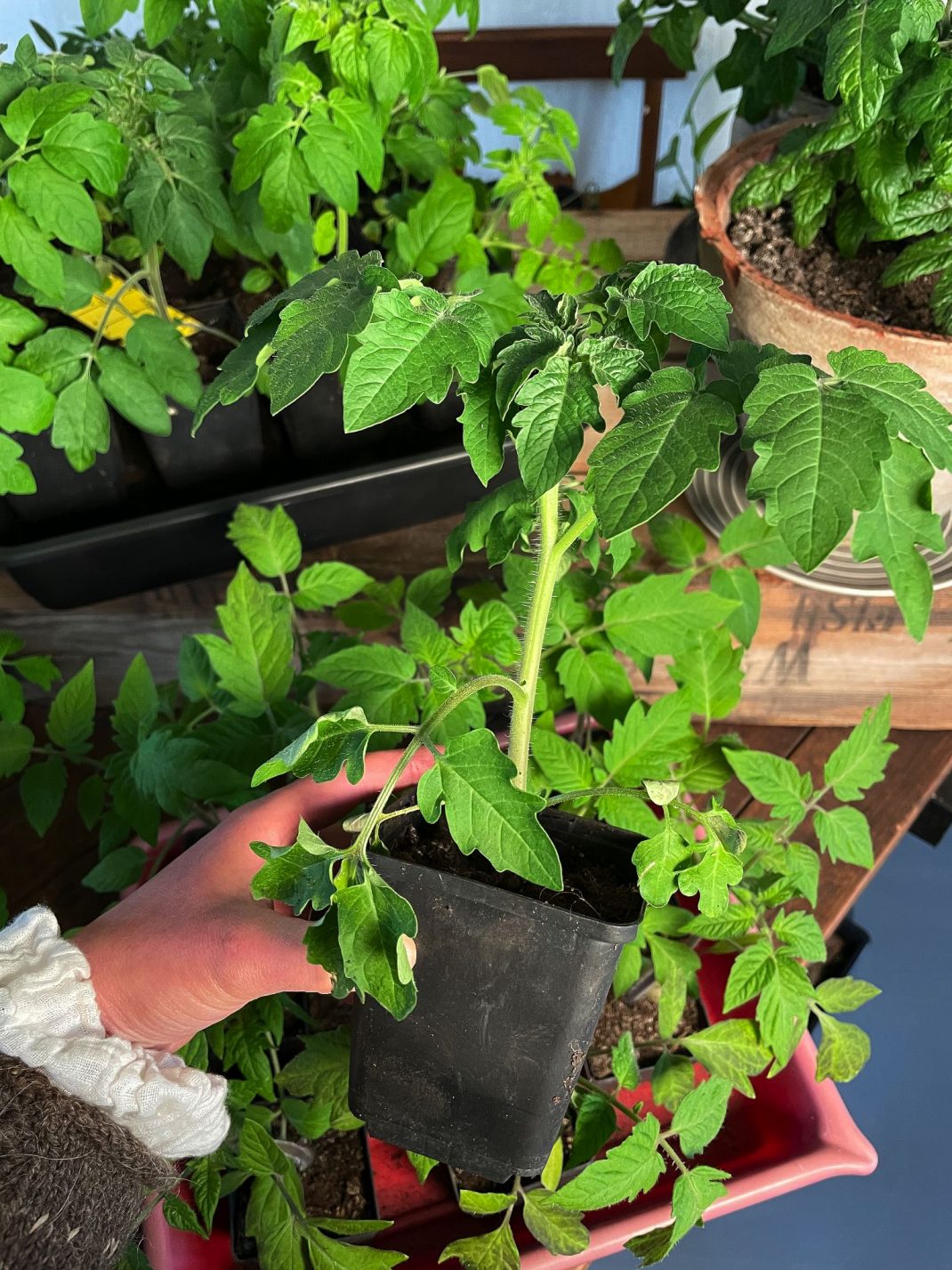
Tomatoes do well in pots for a long time, but they don’t like being in containers that are too small. When transplanting tomatoes, I prefer repotting them so they grow strong and stay healthy.
If the tomatoes freeze
If sudden frost damages your plants before you could protect them, there are a few things you can try. Trim off the damaged parts, cutting just above a leaf node. If you planted the tomato deep, you can carefully remove some soil to expose a healthy part of the stem. If you're lucky, the plant will recover and send out a new stem from the node.
All in all: Be patient. Don’t rush to start transplanting tomatoes outside too soon. It might work out, but it might also end in disaster. Good luck!
/Sara Bäckmo
04. April 2025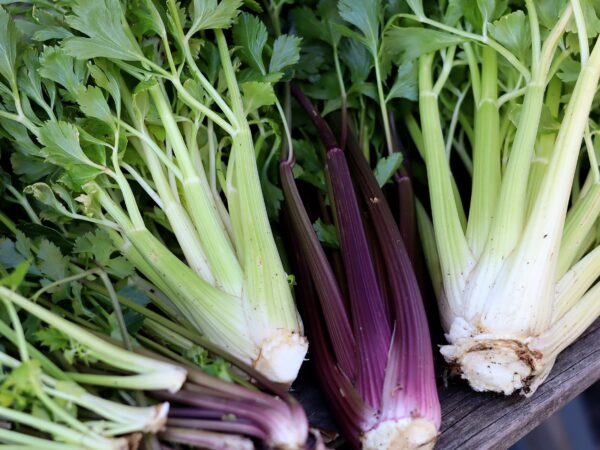
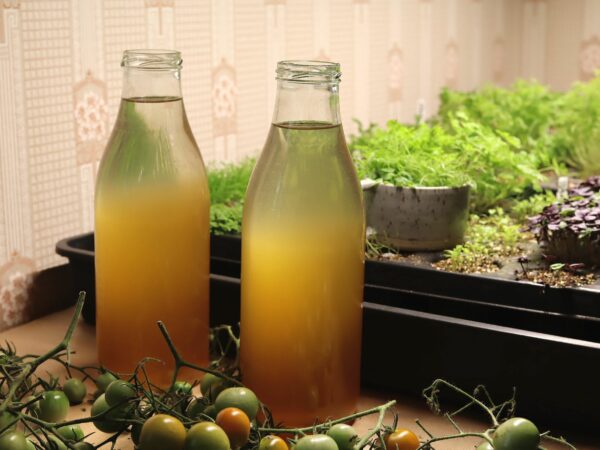
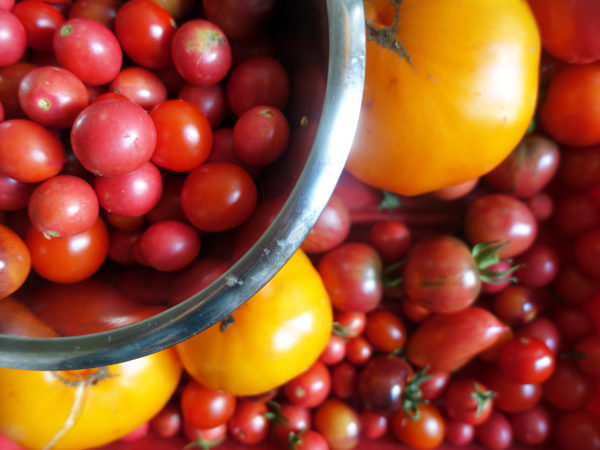
Leave a Reply
You must be logged in to post a comment.